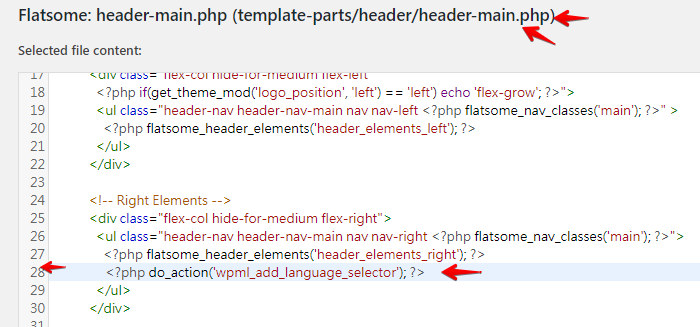

- Wordpress add language switcher to menu how to#
- Wordpress add language switcher to menu install#
- Wordpress add language switcher to menu upgrade#
- Wordpress add language switcher to menu free#
In the next step we should choose whether to enable media attribute translation, i.e. Let’s click on the menu and then from the drop down menu, find the language we are interested in and click on Add New Language.Īfter adding all the languages, in our case Italian and English, click on Continue. From here we can first choose the languages to be used.
Wordpress add language switcher to menu install#
Using the search bar, let’s search for the plugin and then click on Install Now.Īfter installing it, activate it by clicking on Activate.Īs soon as we activate the plugin we are redirected to the configuration wizard. Login to WordPress and click on Plugins → Add New to access the WordPress plugin section. Polylang in addition to including several languages, also has support for languages written from right to left ( RTL language). The plugin can be used both for bilingual sites, like the example I’m about to show you, and for multilingual sites.
Wordpress add language switcher to menu free#
Polylang is a free and easy to use plugin that allows us to translate articles, pages and other elements of our site, offering itself as the ideal solution for our multilingual WordPress.
Wordpress add language switcher to menu how to#
Let’s see how to install and configure it to immediately start creating content for our multilingual WordPress. However, let me point out that there are also plugins that allow you to automatically translate posts like Ajax Translator Revolution, a paid plugin that uses Google Translate for translations.Īmong the multilingual plugins we decided to use Polylang, a free plugin. Using automatic translators, as you can easily guess, is not recommended because the result would not be reliable and in any case you would have to correct the mistakes by hand. To get good results, you will have to translate the posts yourself or use translators. These plugins take care of configuring the posts to then create the translations, but not the translation itself. Free plugins like Polylang or qTranslateX and premium plugins like WPML. There are several plugins you can use to add translations to your posts. The most commonly used solution is to use a multilingual plugin on a standalone WordPress installation. In this manner the user can easily switch between the versions. In case of WordPress multisite you can link each post to its translated version with a plugin like Multisite Language Switcher.
Wordpress add language switcher to menu upgrade#
If you choose to create a network of sites with WordPress multisite consider that if the resources of a shared hosting or WordPress hosting are not enough you can upgrade to a plan with more resources such as a VPS cloud hosting or a dedicated server. You can manage the sites separately or include them in a single network with a WordPress multisite installation. This option consists of creating a separate site for each language in which you want to offer your content. In this case, however, the posts in different languages will all have a single URL, which will not be translatable. This is the case with plugins like qTranslate-X. Then there are WordPress plugins that use a single post in which versions in different languages are stored. This is what plugins like Polylang or WPML allow you to do. Linking allows users to switch between languages. The two posts (or more depending on how many languages you want to translate your posts into) will be linked together. For example, in an Italian-English bilingual blog, you will have a post in Italian and a corresponding one in English. pages, categories, etc.Įach post will then be present in different versions. You will also need to do the same with the other elements of the site i.e. Most multilingual plugins allow you to create several posts on a single WordPress installation, each for each language. One installation with multilingual plugin Let’s see the differences between these alternatives. use WordPress multisite thus creating a network of sites manageable from a single installation.Įach of these methods can fit different needs, so you just need to figure out which one is right for you.use a multilingual plugin on a single WordPress installation.If you want to turn your site into a multilingual WordPress site you have several options in front of you: But thanks to its ever-active community there are several plugins that allow you to do so. WordPress doesn’t offer a built-in feature that allows you to manage your site in multiple languages. WordPress multilingual: translate content into other languages.




 0 kommentar(er)
0 kommentar(er)
